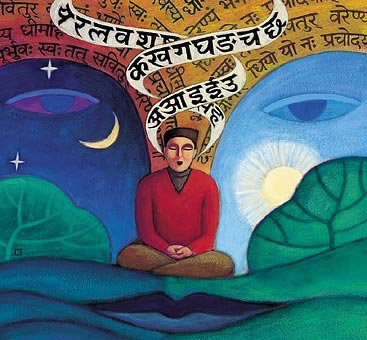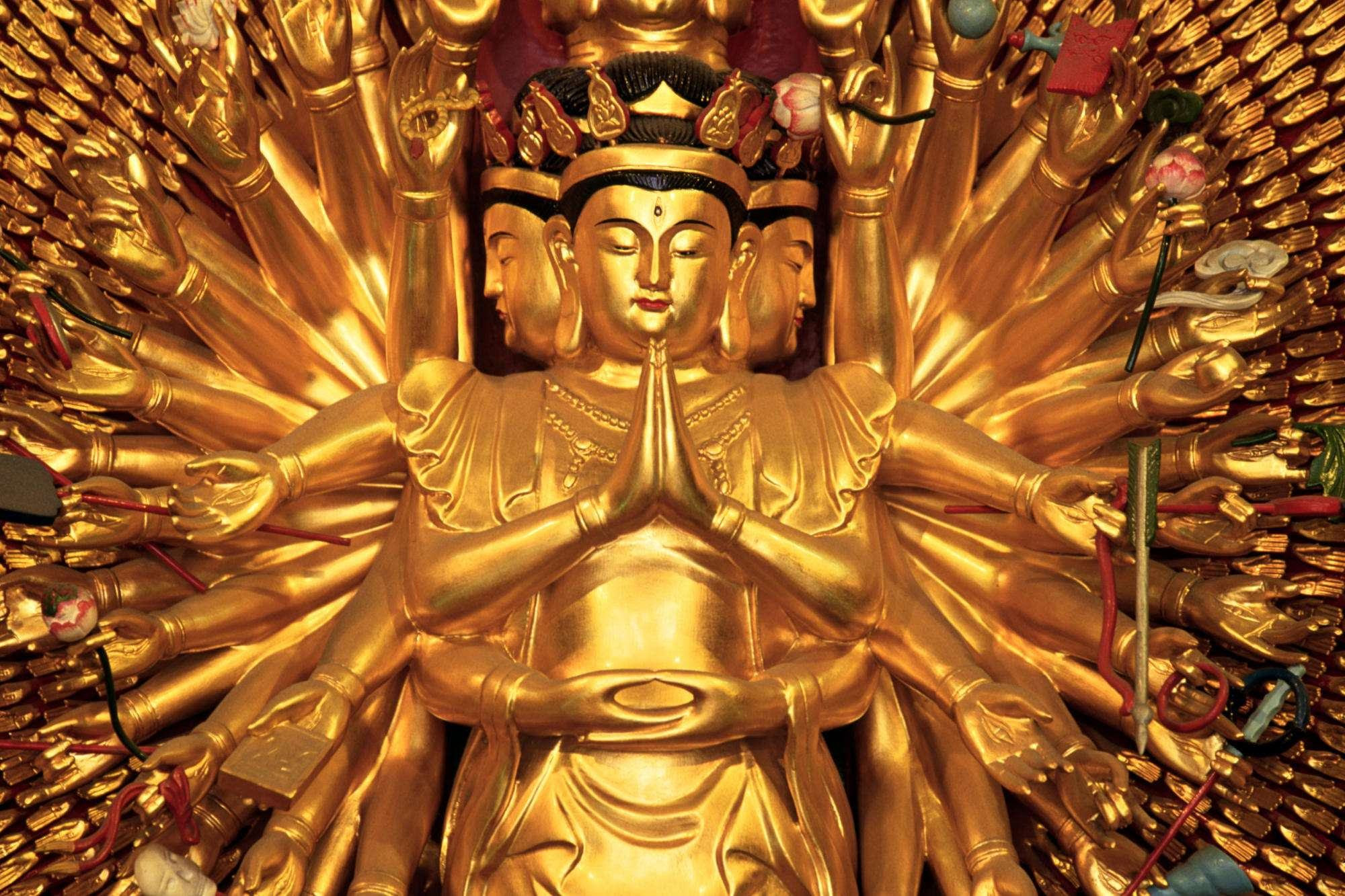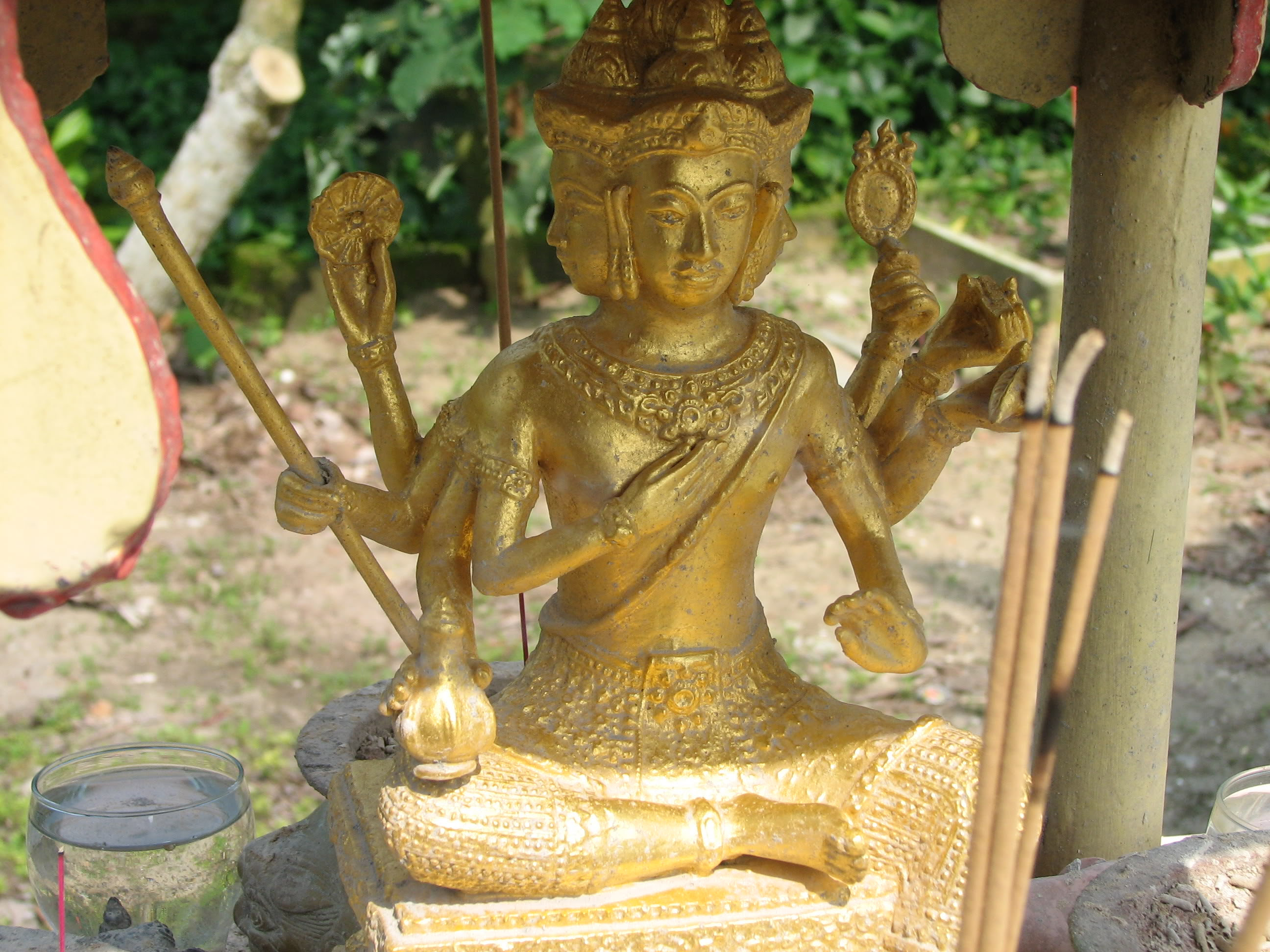 Sanskrit is sure to bring Asia’s giants together. Unlike Pakistan, China does not suffer from irrational hate towards any thing and every thing Hindu or Indian. There is nothing more Indian than Sanskrit. The origin of Chinese languages, Mandarin and Cantonese are traced to a Proto Sino-Tibetan language which in turn also reached various parts of S E Asia . And all of them in turn were influenced by Sanskrit. Hinduism , subsequent Buddhism reached the shores of vast places , entire Asia through Sanskrit. Like Tamil, though different still has vast numbers of Sanskrit words,is nicely termed as ‘Manipravala’, diamond necklace which has different precious gems , the Chinese as well as other Asian regional languages were much influenced by Sanskrit and have Sanskrit origin words. The word ‘Mandarin’ itself is said to have derived from Sanskrit , Mantri or minister. Mandarin was the language of Chinese courts and royal assemblies.
Sanskrit is sure to bring Asia’s giants together. Unlike Pakistan, China does not suffer from irrational hate towards any thing and every thing Hindu or Indian. There is nothing more Indian than Sanskrit. The origin of Chinese languages, Mandarin and Cantonese are traced to a Proto Sino-Tibetan language which in turn also reached various parts of S E Asia . And all of them in turn were influenced by Sanskrit. Hinduism , subsequent Buddhism reached the shores of vast places , entire Asia through Sanskrit. Like Tamil, though different still has vast numbers of Sanskrit words,is nicely termed as ‘Manipravala’, diamond necklace which has different precious gems , the Chinese as well as other Asian regional languages were much influenced by Sanskrit and have Sanskrit origin words. The word ‘Mandarin’ itself is said to have derived from Sanskrit , Mantri or minister. Mandarin was the language of Chinese courts and royal assemblies. Buddha might have chosen to use Pali for communication since that tongue was common man’s language at his time. But Buddhist texts, teachings that survive to day are Sanskrit texts while Pali became extinct. Hence there is no question learning and mastering Sanskrit by students of India will go long way to rekindle and reestablish connections like in ancient past between India and China as well as with rest of S E Asia.
Many scholars refer to an unnamed proto-Indo-European language and here with regards to Asiatic languages too similar conjecture exists-origin from a proto- Sino-Tibetan language. Let us consider few features which will serve as background for further research as to what was that ancient language that gave rise to communication skills for mankind.
Vedic language is only one in the world that does not have any ‘proto’ language preceding it. It is not Sanskrit. Sanskrit is derived from Vedic language , since Veda came to be written in Devanagari, same script as that of Sanskrit, the mistake in understandable. Unlike any other language where only words have meaning, each letter and tone of Vedic language have significance. In the world only one language of that nature is Vedic. Most important is the sound, correct utterance of it. Hence Veda is also called Sruthi, and is transmitted accordingly through hearing and memorizing. The whole branch of phonetics originated from Veda because of its emphasis on accurate pronunciation. Siksha or phonetics is one of required 6 corollary subjects , apart from grammar, chandas (meter as well as some say it is the name for vedic language), Jyotish(astronomy), kalpa ( applied part of Vedic mantras) and Niruktam ( Veda has its own dictionary , the one by Yaska survives , others are not available).
Europeans trace their languages to proto Greek, and proto Greek in turn had Sanskrit for its origin. As noted above Sanskrit is direct descendant of Veda.
Please see this brief account about Sanskrit connection to Indo- European Languages.
|
Light shines in all 10 directions, east , west, north and south as well as SE,SW,NW and NE and above and below. India enlightenment like wise did not just stop with west.
Tibet is a word derived from Tripitaka, three Plateaus . It was founded by a fleeing Kaurava General , Rupasi following Mahabharat War. Naturally hence affinity to India’s culture and ethos and languages remains strong . Dalai Lama himself told how his name is derived. Dalai means Cave, Tibet being mountainous caves are not uncommon. The term ‘Lama’ is Rama with some alteration. Similarly using Rama as a title besides as a name is common in SE Asia . King of Thailand is Rama. Their ancient capital city was Ayuthya , similar to Ayodhya of Rama. King’s royal priest was Vamadeva. He sent his son to learn Veda to one of hermitages in South India. Please see the news item in this regard in 2002.
A Thai Rajaguru in quest of Vedic roots
Author: Ramesh Ramachandran Publication: The Tribune Date: March 11, 2002 URL: http://www.tribuneindia.com/2002/20020311/ncr1.htm




He’s a man in search of his Indian roots. After his ancestors left Indian shores for Thailand centuries ago, he is back `home’ on a mission. To find a suitable place where children of Thai Brahmins (“Brahmanas,” he corrects) can learn ancient Vedic texts and scriptures.
Attired in white with his lock of hair tied neatly behind in a bun, Var Rajaguru Vamadeva Muni is a picture of serenity seated amidst his aides and well-wishers. “I am here to scout for a suitable place to send Brahmana children for pursuing Vedic studies. I want to send Brahmana boys from Thailand so that they would learn more about priest craft, philosophy, etc,” he says while sharing the overriding purpose of his visit. “The root of Thai Brahmanas,” he says, “is in south India, our ancestors come from that place, and having their children study Vedic scriptures here would enable the younger generation to go deep into their roots.”
The Rajaguru (Royal Court Chief Brahmin) to King Bhumibal Atulyatej of Thailand, Vamadeva Muni is the purveyor of all things religious, as it were, for the Royal Family. The Rajaguru coronates the King in a strictly Brahminical ceremony. Also, presides over the ploughing ceremony when the land is tilled in the presence of the King. In ancient days, says Var Rajaguru Vamadeva Muni, the plougher was supposed to be King and tradition has it that the King chooses the person who tills the land for the ceremony.
In India on a personal visit, the Rajaguru on Sunday met with Prime Minister Atal Bihari Vajpayee. On his itinerary are meetings with Union Minister of Home Affairs LK Advani and Union Human Resource Development Minister Murli Manohar Joshi. During his stay in India, the Rajaguru would also call on Shankaracharya of Kanchi Kamakoti Peetham Jayendra Saraswati. His aides say visits to Tirupati, Mahabalipuram, Trichy, Chidambaram, Rameshwaram and Thanjavur are also planned.
Thais, says the Muni, practise Buddhism but it was not so in ancient times when Hinduism flourished. Today the Hinduism “indigenised” by the Thais has a Buddhist influence and that he attributes to the “confluence of cultures.” That Hinduism still holds a special place in the religious and cultural history of that country, he says, can be appreciated by the fact that ceremonies like the Tiru Vempavai and Sankranti have survived centuries and are observed to this day. While Tiru Vempavai, or the Mundan ceremony, is observed for a fortnight every January, Sankranti is celebrated nationwide on April 13 not only by the Brahmanas but by other sections of society.
Recalling his prior visits to India, the Rajaguru says the last time he was here was at the invitation of Swami Lokeshananda Giriji Maharaj, the Peethadheesh of Juna Akhara. “That was for the Kumbh Mela thirteen years ago,” he remembers fondly. Reminiscing about his “umbilical cord” with mainland India, he says there is a lot to be learnt from ancient Hindu traditions and beliefs. Prodded into sharing his lineage, he says : “It is difficult to trace my ancestry because there are few records,” he says. “They came from south India and settled in southern Thailand. I come from the province of Pattalung and am the fourth generation of Rajagurus serving the King.
He has a word of advice though for all. “Using religion for selfish gains creates problems,” says the Rajaguru, “On the contrary, if one thinks religion is for the well-being of all then problems will be solved.”
Cultural influence of India far widespread though the land that constitutes the nation was reduced continuously since 1930s by British and then Nehru led Congress party. Each had their own reasons to put down India, and promote their regimes, themselves broadcasting India became a nation only when they ushered imperial raj followed by license permit raj . So even freedom the timeless links of India will all nations and regions all around were not restored , stayed in abeyance . Only of late attempts are being made not only with above mentioned regions but also with ancient civilizations world wide, still present in Europe and Americas are being made. Starting Nalanda University after 800 year gap was a good step in that direction, even though progress was disproportionate to money and time spent due to usual corruption and inefficiency. We hope with the new government in place since May 2014, sooner than later Nalanda will acquire its former glory.
Korean language has close connections with Tamil. When Tamil princess was married Korean Prince, she introduced Tamil refining Korean .
There is a debate going on whether Sanskrit and Chinese are ‘congenial languages’ together. Certainly congeniality was in force when Buddhism, before that Hinduism reached China , many Sanskrit texts, works got translated into Chinese enriching that language, much like what happened to Tamil. A combination of Sanskrit and Tamil is called nicely as Manipravala, a necklace of different gems. Only further research will yield philological affinity between ancient languages of India and China, i.e Vedic language and Mandarin. Mandarin is a court language, the word Mandarian is said to be related Sanskrit Mantri. Mantri is an official, minister in royal court.
There is however some traces of Hindu influence in ancient and medieval times in China, naturally spread of Buddhism possibly absorbed what remained of Hinduism in far flung areas like China, S E Asia. In these places both Buddhist and Hindu deities, like Ganesha or Saraswathi along with Buddha are worshiped.
Here is a brief note in this regard;
Hinduism in China

Hinduism has no attested presence in modern mainland China, but archaeological evidence suggests presence of Hinduism in different provinces of medieval China. Hindu influences were also absorbed in the country through the spread of Buddhism over its history.
Hinduism Importance

Hindu community, particularly through Tamil merchant guilds of Ayyavole and Manigramam, once thrived in medieval south China; evidence of Hindu motifs and temples, such as in the Kaiyuan temple, continue to be discovered in Quanzhou, Fujian province of southeast China. A small community of Hindu immigrant workers exists in Hong Kong.
Early Hindu influence
Some examples of influence of Hinduism on ancient Chinese religion included the belief of “six schools” or “six doctrines” as well as use of Yoga, stupas (later became pagoda in East Asia). However, in China, Hinduism has never gained much popularity, unlike the beliefs of Buddhism and Confucianism. There were exceptions, such as parts of Tibet.
Hindu Community in China

There was a small Hindu community in China, mostly situated in southeastern China. A late thirteenth-century bilingual Tamil and Chinese-language inscription has been found associated with the remains of a Siva temple of Quanzhou. This was one of, possibly, two south Indian-style Hindu temples that must have been built in the southeastern sector of the old port, where the foreign traders’ enclave was formerly located.
The affinity of cultures of India, China as well as Japan can be seen in names of mountains.
The Name of The Mountain
Sumeru (Sanskrit) or Sineru (Pâli) is the name of the central world-mountain in Buddhist cosmology. Etymologically, the proper name of the mountain is Meru (Pâli Meru), to which is added the approbatory prefix su-, resulting in the meaning “excellent Meru” or “wonderful Meru”.
Other Names denoting the same mountain:
- Mount Sumeru (Shumisen)(Shumisen-gi) – Japan
- Madala Mountain
- Cosmic Mountain
Conclusion: Sanskrit is a very much alive and vibrant language. All marriages and rituals , from birth to end the various traditional rites are conducted using Sanskrit. It is not fault of Sanskrit when some say they do not understand what was being said during ceremonies. The person should have made at least some effort to learn truly this language of gods. Even a rudimentary familiarity will further enrich any native or regional language of the seeker and speaker. Furthermore revival of Sanskrit will further enhance connections between various civilizations of Asia as well as those of west thus bringing together the world as well as people closer together. So it is good to learn that China’s intellectuals are turning to Sanskrit

Transliteration (by Stefán Steinsson) Sarvē mānavāḥ janmanā svatantrāḥ vaiyaktikagauravēṇa adhikārēṇa ca tulyāḥ ēva, sarvēṣāṃ vivēkaḥ ātmasākṣī ca vartatē, sarvē parasparaṃ bhrātṛbhāvēna vyavaharēyuḥ.
Translation and recording by Shriramana Sharma
Translation
All human beings are born free and equal in dignity and rights. They are endowed with reason and conscience and should act towards one another in a spirit of brotherhood. (Article 1 of the Universal Declaration of Human Rights)
Best wishes,
G V Chelvapilla
=========================================================================================================================
Why China’s intellectuals are turning to Sanskrit
Beida can play a crucial role in boosting the world’s knowledge of the ancient language by supporting the ongoing effort to translate the lost Tibet palm-leaves.
In China, there’s a quiet – but no less remarkable – revival under way of the unlikeliest kind. Over the past few weeks, 120 Chinese – a group of highly qualified intellectuals, scholars, graduate students and artists – have been gathering in the old town of Hangzhou – famed in China for its beauty of hills and lakes and cultural history, but known today as the centre of IT in China and the home of e-commerce giant Alibaba. For the first time in a decade, the Hangzhou Buddhism Institute has resumed classes teaching Sanskrit. This resumption, organisers say, comes amid a wider campaign by the Xi Jinping government to promote traditional culture. But what’s striking, according to teachers at the institute, is the demand for Sanskrit.
“Normally, my Sanskrit classes comprise of no more than 20 students each year. I was quite astonished to learn from Dr Li that he has such a large response from Chinese students,” Konrad Meisig, dean of the Institute of Indology of the Mainz University, told Chinese media. The classes are being taught by Chinese scholar Li Wei, who has a doctorate from Meisig’s university. Interestingly, when the institute offered classes in 2004, there was “little interest”, according to Gang Xiao, a teacher with the school. Meisig suggested in an interview that the revival was on account of “a huge amount of interest and craving for knowledge about foreign cultures in China”.
In the case of Sanskrit and China, there appears to be more than that at play. The interest in Sanskrit appears part of a wider curiosity about Buddhism and Buddhist philosophy, including Tibetan Buddhism, among white-collar, educated, urban Chinese. This struck me when I visited the thriving Sanskrit programme at China’s most elite school, Peking University in Beijing, or Beida as it is known here. Satyavrat Shastri, a renowned Sanskrit scholar who has visited Beijing to teach intermittently at Beida, told me on one visit a couple of years ago that there was also deep interest in unravelling a trove of rich – but forgotten – Sanskrit manuscripts found in Tibet. There certainly was deep passion and interest among the young Chinese enrolled at Beida. Their pronunciation as they recited shlokas was particularly impressive. Perhaps what was even more impressive was their deep desire to learn about a classical, ancient language from a neighbouring country at a time when many in India themselves feel that patronage of this old language is on the wane.
Beida’s Sanskrit connection goes back more than five decades, when the renowned Chinese Indologist Ji Xianlin started the programme, blessed by then Premier Zhou Enlai who was keen to foster cultural ties with India — that was before 1962. The programme today wants to keep alive the late Ji’s contribution, which includes what are considered brilliant translations of Indian epics that have been read widely in China. Beida is training more than 50 students who could, if they persevere mastering this most complex of linguistic traditions, play a crucial role in boosting not only India’s but the world’s knowledge of Sanskrit by supporting the ongoing effort to translate the lost palm-leaves of Tibet.
Yet one source of sadness that I heard at Beida was their limited engagement with Indian universities. More Sanskrit teachers in China appear to have been supported and taught by German schools – such as Mainz University – which also have a long tradition of Sanskrit study. Students have told me of difficulties in securing short-term opportunities to study in Indian universities, which either show little interest in China or are bound by bureaucratic fixations that enable little cooperation with overseas institutes that may follow different procedures. (Not to mention a continuing difficulty with obtaining visas to attend conferences, which are often held up, I heard, because of a policy requiring Chinese scholars to obtain home ministry clearances, which on occasion do not arrive in time.)
So Chinese students turn not to India but to the West to fulfil their passions for Sanskrit. Wei Xiuxiu, 24, a graduate of an art school in China, bemoaned in an interview with the Shanghai Daily the reliance on Western English translations to learn Indian philosophy. “I hope one day I can read the original works and even do the translation,” she said. Wei recalled how her love of Sanskrit began – an explanation that sounded familiar to me following my visit to Beida. “Although these alphabets seem so distant and are so difficult to recognise,” she said, “the moment I read it out loud, I could feel the power of the ancient words.”
Source: WHN Media Network





